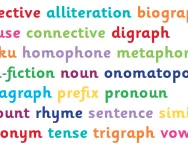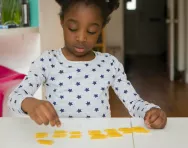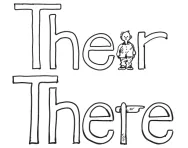Important update from TheSchoolRun
For the past 13 years, TheSchoolRun has been run by a small team of mums working from home, dedicated to providing quality educational resources to primary school parents. Unfortunately, rising supplier costs and falling revenue have made it impossible for us to continue operating, and we’ve had to make the difficult decision to close. The good news: We’ve arranged for another educational provider to take over many of our resources. These will be hosted on a new portal, where the content will be updated and expanded to support your child’s learning.
What this means for subscribers:
- Your subscription is still active, and for now, you can keep using the website as normal — just log in with your usual details to access all our articles and resources*.
- In a few months, all resources will move to the new portal. You’ll continue to have access there until your subscription ends. We’ll send you full details nearer the time.
- As a thank you for your support, we’ll also be sending you 16 primary school eBooks (worth £108.84) to download and keep.
A few changes to be aware of:
- The Learning Journey weekly email has ended, but your child’s plan will still be updated on your dashboard each Monday. Just log in to see the recommended worksheets.
- The 11+ weekly emails have now ended. We sent you all the remaining emails in the series at the end of March — please check your inbox (and spam folder) if you haven’t seen them. You can also follow the full programme here: 11+ Learning Journey.
If you have any questions, please contact us at [email protected]. Thank you for being part of our journey it’s been a privilege to support your family’s learning.
*If you need to reset your password, it will still work as usual. Please check your spam folder if the reset email doesn’t appear in your inbox.
National Reading and Numeracy Tests explained for parents

What are the National Reading and Numeracy Tests?
They’re tests that all Y2-Y9 children take at schools in Wales, and are part of a new National Literacy and Numeracy Framework (LNF). The tests were introduced in May 2013. Their main aims are to:
- Give schools an accurate gauge of individual children’s skills and abilities
- Help drive up literacy and numeracy standards in children throughout Wales
- Paint a clearer picture of how children are performing nationally (until now, individual schools have carried out their own tests in literacy and numeracy)

Boost Your Child's Learning Today!
- Start your child on a tailored learning programme
- Get weekly English & maths resources sent direct to your inbox
- Keep your child's learning on track
The Welsh Assembly Government plans that these will be the only end-of-year reading and numeracy tests schools in Wales carry out from Y2 to Y9.
Will my child have to take SATs as well as the National Reading and Numeracy tests?
No. Children in Wales don't take SATs; for more information about how the Welsh and English school systems differ read our overview of primary education in Wales.
What form do the Reading and Numeracy tests take?
The tests are currently a mixture of paper-based and online, and take between 30 and 60 minutes each (although children who need longer because of additional needs will be given extra time). Although it’s up to each school how to administer them, it’s recommended that children in Y2 and Y3 have a chance to sit the tests in smaller chunks of 20 minutes or 30 minutes at a time.
The existing paper tests for learners in Year 2 to Year 9 will be replaced by online personalised assessments in a process that will take place between 2019 and 2021. The Welsh Government says this will enable the tests to be tailored to pupils' level and will provide faster, more detailed feedback.
What happens in the reading test?
Children read a passage before answering a mixture of multiple choice questions and questions needing short, closed responses like ordering, pairing and underlining. They’ll have up to an hour to finish, plus there’s time at the beginning to do practice questions.
The reading tests span year groups: Y2 and Y3 take the same test, as do Y4 and Y5, and also Y6 and Y7. But there’s no risk of children taking the same test twice as new tests will be produced for each school year.
How is the numeracy test structured?
The numeracy part of the test last for 30 minutes; children are tested on addition, subtraction, multiplication and division. A 30-minute reasoning test assesses how well they can apply calculation skills to everyday problems.
Unlike the reading test, there’s a separate numeracy test for each year group.
Are the National Reading and Numeracy Tests compulsory?
Yes, they’re compulsory for all Y2-Y9 children in Wales, and since September 2013 they've become a statutory part of the school curriculum too.
Most children will be able to take the tests without special arrangements, but if your child needs extra support the school should be able to modify test papers, access and so on.
When do children take the National Reading and Numeracy tests?
Your child’s school will let you know exactly when the tests are to be taken.
In 2020 the National Reading and Numeracy tests will be administered in primary schools between 28 April and 5 May and in secondary schools between 21 April and 5 May.
When do parents get the results?
Teachers will mark the tests, and you’ll get a report back by the end of the summer term on how your child did. This will include their standardised score and a score of how your child performed compared to others the same age in Wales, as well as a progress score.
How will the National Reading and Numeracy Tests results be used?
There are no set guidelines on this. Primary and secondary schools can decide between themselves how test results are used when children move schools. The Welsh Assembly Government plans to use some of the data from the tests in its planning and banding policies.
Will any of the testing be in Welsh?
All tests will be available in English and Welsh. If your child goes to an English-medium school they’ll just sit the tests in English. If your child attends a Welsh-medium school, they’ll sit the Welsh reading test in Y2 and then the Welsh reading test in Y3 – plus, in Y3 (if they want to), the English reading test. Children in all other years and at Welsh-medium schools will sit the reading tests in English as well as Welsh.
How can I help my child prepare for the tests?
Talk to your child about the tests, but play them down as a fun challenge everyone will be doing instead of something to be scared of. It’s a good idea to download sample tests at home to try together (see above). But the main thing is to make your child’s learning at home fun – play games and use favourite activities to help them learn.
For English, maths and science worksheets prepared for each school year group look through our Learning Journeys or browse through our activities, filtering by subject and school year to find the right resources for your child.
